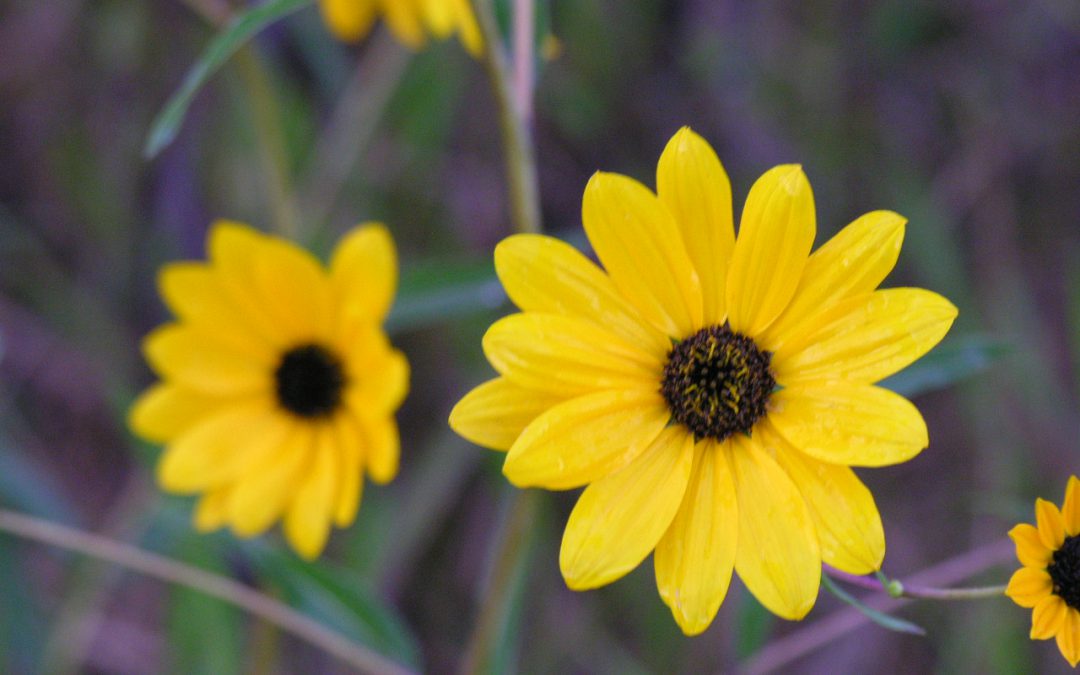
by Taylor Vandiver | Apr 14, 2015
Rain gardens are an easy way to return water to our aquifer, reduce erosion, and help prevent stormwater runoff.
Running down the driveway or patio, rainwater can pick up lawn chemicals and pesticides. A rain garden is basically a low section of the landscape planted with native plants that like to get their “feet” wet. The garden collects rainwater, giving it a chance to “strain” out impurities before draining into the aquifer.
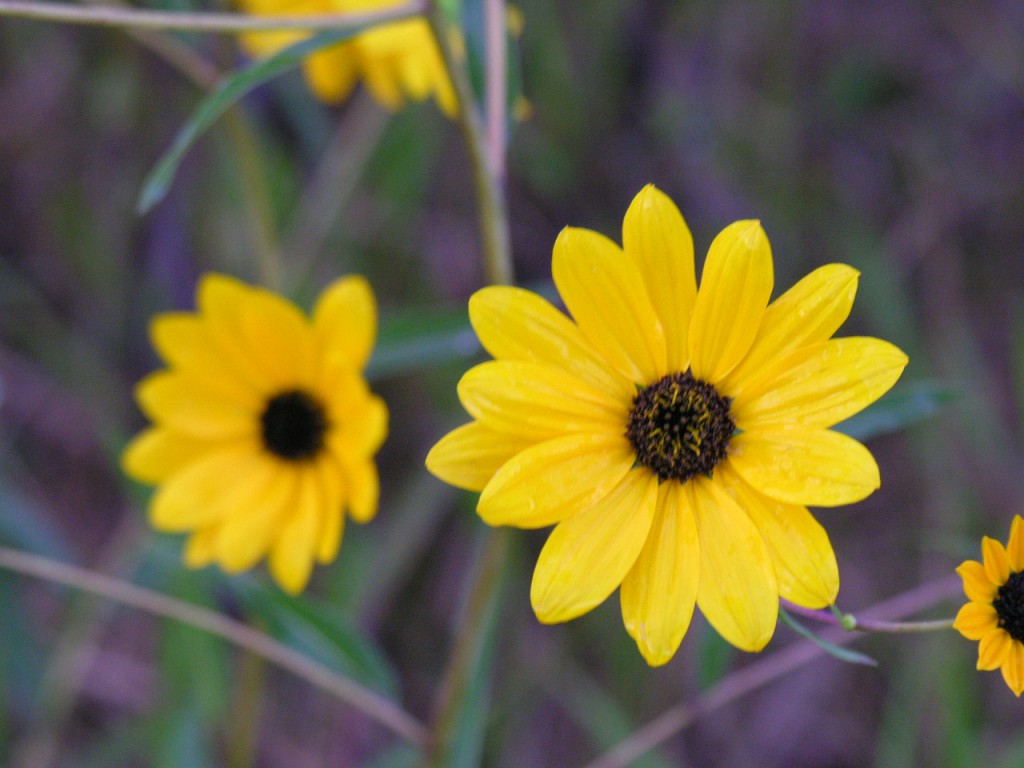
Swamp sunflower. Photo courtesy UF/IFAS.
They work best when they’re placed at the bottom of downspouts or naturally low spots in the landscape, usually where water tends to puddle. They’re especially useful for collecting runoff from paved surfaces. Rain gardens can be any size or shape and can attract thirsty wildlife.
When selecting plants, you’ll need to consider how much sun your site gets and how much space is available. Make sure you select plants that are not just water-tolerant, but also drought-tolerant for the times between rains.
Rain gardens rely on plants that will survive dry spells but then soak up excess stormwater during Florida’s rainy months, preventing the water from running across your landscape.
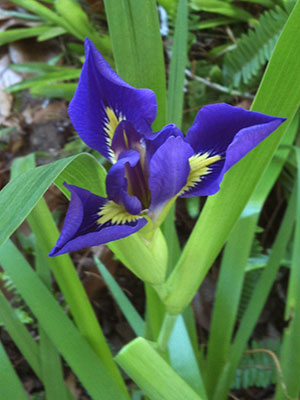
Blue flag iris. Photo courtesy UF/IFAS.
Include different types of plants in your rain garden to create a complete and cohesive look that will provide year-round interest. The following is a short list of flowers, shrubs, and grasses that would perform well in a rain garden.
Flowers:
- Blue flag iris
- Goldenrod
- Swamp sunflower
- Spider lily
- Milkweed
Grasses:
- Florida gamma grass
- Muhly grass
- Wiregrass
Shrubs:
- Virginia willow
- Buttonbush
- Wax myrtle
Here is a list of native plants that will do well in your North Florida rain garden. As always consult your local Extension Office for more information. All of the information in this article was provided by UF/IFAS Extension.
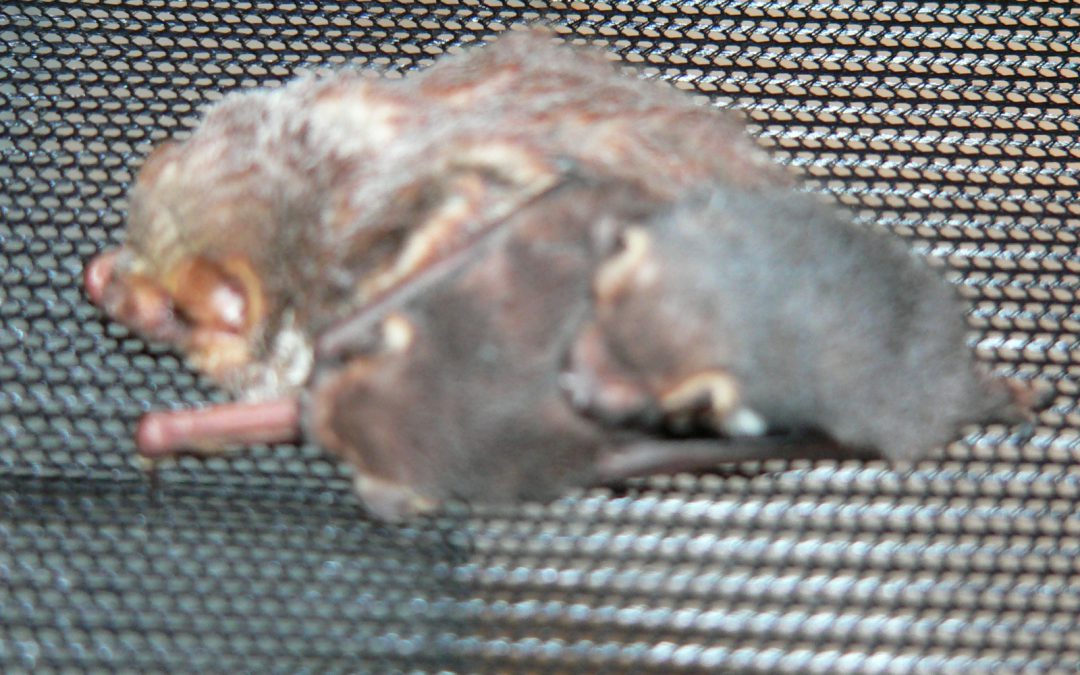
by Carrie Stevenson | Apr 7, 2015
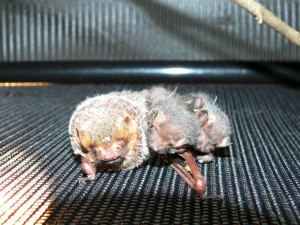
These young Seminole bat pups were separated from their mother and extremely vulnerable in the wild. The local Wildlife Sanctuary nursed them to health. Photo credit: Carrie Stevenson
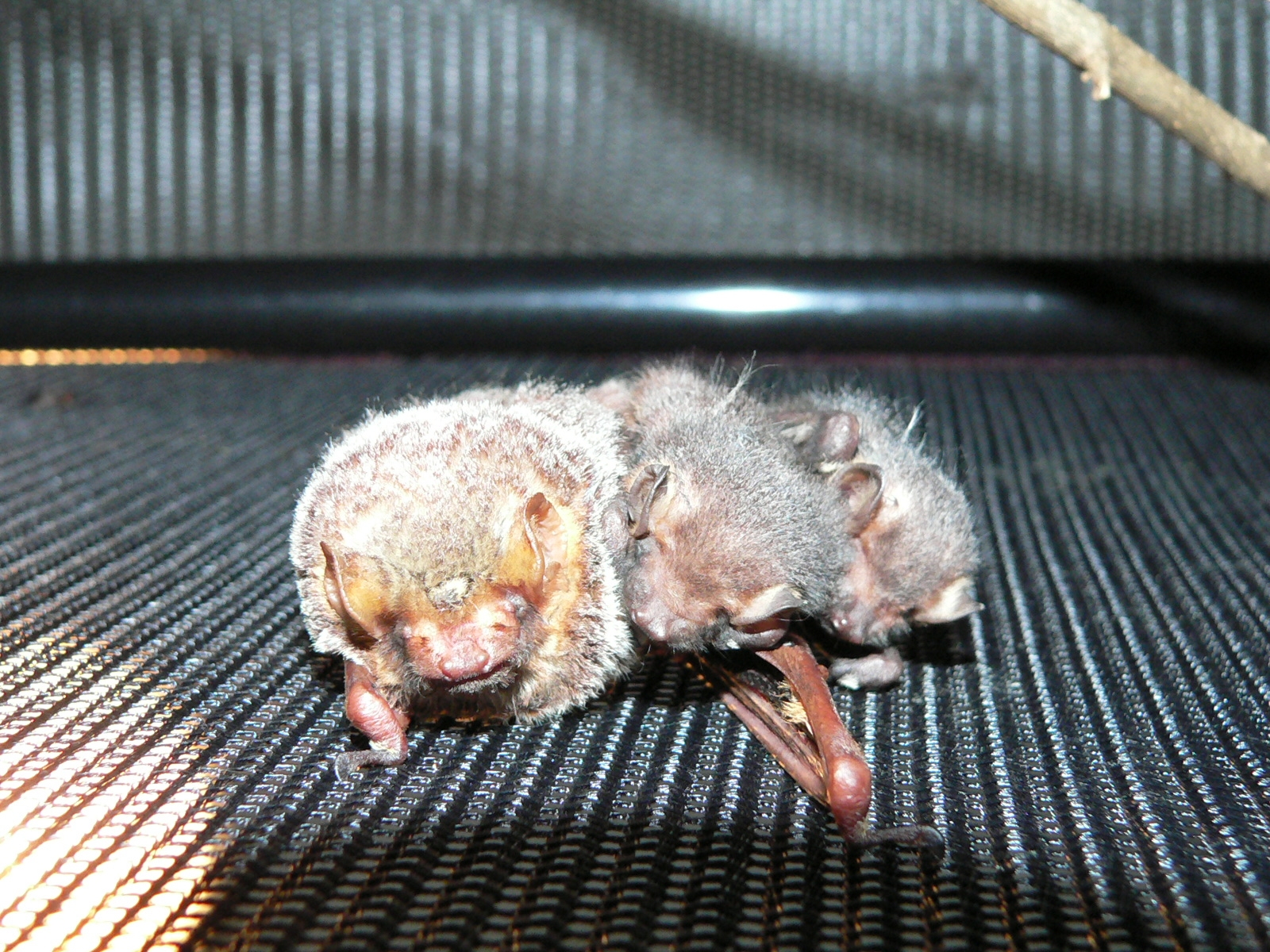 As spring commences and young wildlife of all species are born, everyone’s favorite flying, furry mammal begins roosting season. Ideally, bats will find homes in trees, caves, abandoned buildings, and bat houses, but sometimes they end up in a home. I receive calls often about how to best remove or exclude a group of bats living in an attic or garage. While there are countless benefits (most notably, efficient insect control) to having bats in one’s landscape or neighborhood, most people prefer they not share their own home with them.
As spring commences and young wildlife of all species are born, everyone’s favorite flying, furry mammal begins roosting season. Ideally, bats will find homes in trees, caves, abandoned buildings, and bat houses, but sometimes they end up in a home. I receive calls often about how to best remove or exclude a group of bats living in an attic or garage. While there are countless benefits (most notably, efficient insect control) to having bats in one’s landscape or neighborhood, most people prefer they not share their own home with them.
Bats have a slow reproductive cycle and declining populations in the United States, and are protected by several state laws. According to Florida Administrative Code 68A-9.010 under “Taking Nuisance Wildlife,” it is illegal in Florida to prevent bats from returning to any roosting location from April 16 to August 14. Female bats typically give birth during maternity season to one pup (or rarely, 2-3), which clings to the mother’s fur to nurse for their first few weeks and months of life. Being nocturnal, this means mothers and babies will be inside a dwelling during the day. Typically, if a homeowner is trying to exclude bats from a home, they will put up netting or seal a hole in an attic entry in the evening after bats have flown off to feed on insects at night. However, if this is done during roosting season, young bats left back in the roost while mothers are hunting can get trapped inside a building and will not survive.
This obviously has the potential to cause conflict between homeowners and the bat population. The Florida Fish & Wildlife Conservation Commission has regulatory oversight for bat-related issues, and they will work with citizens to arrange a positive outcome for both the property owner and the animals involved. Bats play an important role the ecosystem as efficient controllers of insect populations.
Unfortunately, bat populations are declining in North America due to a devastating disease called white-nose syndrome and loss of habitat. However, you can help these fascinating animals by installing a bat house in your yard. Keep in mind that bats attracted to bat houses prefer to be in open areas away from trees (where their predators hide), and the house should be installed at least 12 feet in the air. Bat houses can be purchased or built rather simply—keep an eye out for Extension workshops near you, or visit the UF Wildlife Ecology publication, “Effective Bat Houses for Florida” or Bat Conservation International’s website for simple instructions.
To learn more about bats and how to help them, visit this website or contact me or your local County Extension office!
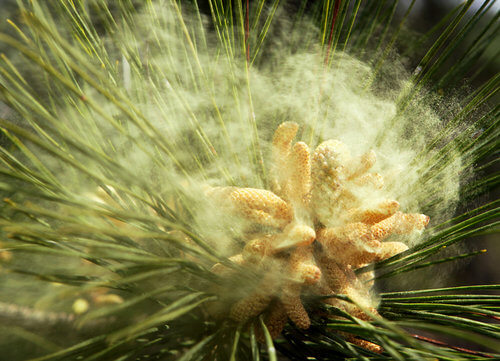
by Taylor Vandiver | Mar 24, 2015
It’s that time of year again, that time when your car changes color like a chameleon in order to mimic the surrounding landscape. Anything that stands still long enough will become coated with a light green to yellow dust. What is this dust you might ask? What you are seeing is pollen, a sure sign that spring has arrived and allergy season is here! The pollen that can be seen is from pine trees and is not a major contributor to allergies, but the invisible pollen from oak trees and other plants can wreak havoc on sinuses. And while you may be cursing the trees for causing your eyes to water and coating your car, it’s important to remember that plants need pollen in order to reproduce.

Pollen disseminating from a pine tree anther. Picture courtesy of http://supermanherbs.com/megadose-pine-pollen/
Pollen is disseminated from blooming trees and plants. The process of pollination develops new plant seeds. Pollen is dry and light, enabling it to float through the wind and travel several miles. Plants that depend on wind for dispersal have to produce massive amounts of pollen since only a small amount will actually result in seed production. Plants pollinated by insects don’t have to produce as much pollen because of the efficiency of the insects in distributing the pollen. Changes in the weather directly influence the amount of pollen and how it will affect allergy sufferers. Rain dampens pollen and reduces its ability to flow through the air. A freeze can also slow down a tree’s rate of producing pollen. Windy and warm weather can increase pollen amounts.
A Leon County allergy and asthma specialist stated that roughly 40 percent of the population suffers from pollen allergies. The best thing you can do if you are part of this 40 percent is to reduce your exposure to pollen. Here are a few ways you can keep your allergies at bay:
- Dry clothes in an automatic dryer rather than hanging them outside to avoid pollen collecting on clothing and being carried indoors.
- Consider limiting outdoor activities during the pollen season (Florida trees often release pollen from January to June).
- Stay inside during peak pollen times (from 10 a.m. to 4 p.m.).
- Restrict outdoor activities during days with high winds and low humidity.
- Shower after spending time outdoors to remove pollen from hair and skin.
- Use air filters and clean regularly, or run an air conditioner and change the air filter frequently.
- Wear a dust mask when mowing the lawn, gardening, or raking leaves.
If you would like to know what trees are producing pollen in your area at certain times of the year you can visit this website http://www.pollenlibrary.com/State/Florida/. As always, feel free to contact your local Extension Office for more information.
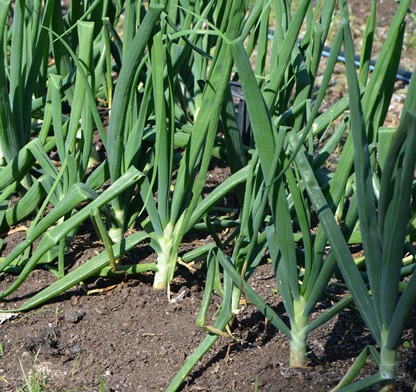
by Les Harrison | Mar 24, 2015

Onions are simple to grow and take up very little space. This is an easy selection for a beginning gardener.
The winter weather is finally giving way to springtime. While temperatures have been erratic, the rain has been sufficient.
There are still plenty of cool season leafy garden crops in production, but they will not last long as the temperatures rise.
One in-ground selection does offer some options. Onions planted last fall provide the greens and the bulb for a nutritional flavor enhancer from salads to a variety of dishes.
The common onion, Allium cepa, has many varieties within the species, and is grown and consumed worldwide. Garlic, chives and leeks are in the same genus as onions with their use similar to onions, but not nearly as frequent.
This popular and simple to grow fall vegetable easily handled the harshest north Florida winters. The multiple mornings of subfreezing temperatures and hard frost had no appreciable effect on this versatile vegetable.
Most regional soils can provide a good growing medium for onions. The lack of sulfur in the dirt and the excellent drainage are two requirements for producing a potentially mild bulb, depending on the cultivar planted.
The high levels of available phosphate in most soils also are an advantage when growing onions.
The Granex yellow onion cultivar is likely the current favorite among many gardeners. This is the same cultivar which produces some the premium branded mild onions on the market today.
Onions can be planted from August to March, either by seed or bulbs. Two inch spacing between plants provide enough space to grow and does not waste limited cultivation area.
Days to harvest depend on how the onion is to be used. Green onions, sometimes known as scallions, take four months with bulb onions taking five months or longer.In reality, onions are biennial but are usually grown as annuals.
Historical evidence of onion usage dates back 7,000 years to the Bronze Age. It is uncertain if these bulbs were cultivated or collected in the wild.
Their ease of transportation, long shelf life, and many uses made them an ideal candidate for long distance travel and trade in the days before refrigeration and high-speed movement of vegetables. Every culture and nation has its own special uses for onions.
Today’s onions provide the consumer with a combination of excellent nutrition, and good storage and handling qualities while enhancing the flavor of many meats, vegetables and salads. The bulbs come in three colors (red, yellow and white) which add to the visual quality of the dining experience.
Onions deliver vitamins B-6, C and Folic Acid. They are naturally low in sodium and fats, and contain four percent sugar.
Onions have compounds such as favonoids and phenolics which have had numerous positive health benefits attributed to them. Their consumption can be part of a healthy diet.
Properly handled onions have a potentially long storage life. Store in a cool, dry, well-ventilated area with 45 to 55 degrees the ideal temperature range.
To learn more about growing onions grown in north Florida, visit your UF/IFAS County Extension office or read the Florida Vegetable Gardening Guide.







